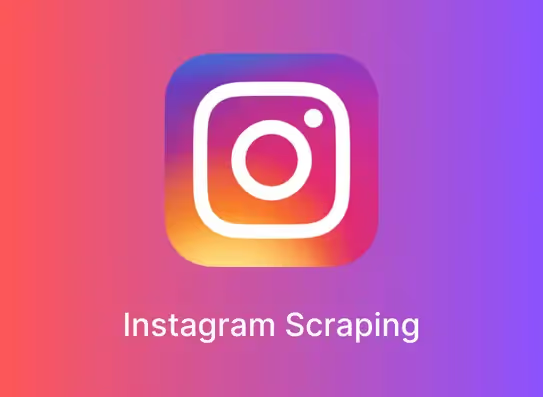TL;DR
Unlock the power of LinkedIn for business growth in 2025 by leveraging official API endpoints. With robust LinkedIn API integration, you can automate lead generation, marketing, social listening, analytics, and compliance tasks at scale—all within LinkedIn’s terms of service. This comprehensive guide covers building a powerful LinkedIn automation stack, compares official automation tools, reviews usage stats, and answers your top questions.
Understanding LinkedIn API Integration
Before building your automation stack, it's important to understand what the official LinkedIn APIs offer—especially how they differ from common misconceptions and third-party scrapers.
LinkedIn APIs Overview
- LinkedIn Marketing API: Manage ads, campaigns, and get detailed marketing analytics
- Pages API: Automate posting on company pages, manage engagement, and respond to messages
- People/Profile and Connections APIs: Highly restricted; limited access for authorized integrations only
- All APIs require authentication and adhere to strict data privacy standards
Read the full LinkedIn API Integration Guide
Getting Started: Prerequisites and Setup
Every successful LinkedIn automation stack starts with the right configuration and permissions.
Steps for LinkedIn API Integration
- Register for a LinkedIn Developer Account
- Create and Configure Your LinkedIn App
- Set scopes like r_emailaddress, r_liteprofile, w_member_social, and marketing endpoints
- Associate with a verified LinkedIn Company Page
- Set scopes like r_emailaddress, r_liteprofile, w_member_social, and marketing endpoints
- Authenticate Using OAuth 2.0
- Ensure Compliance and Security
- Test in Sandbox Mode
View LinkedIn’s Official API Policy
The Core: LinkedIn Marketing API
If you’re serious about LinkedIn automation, the Marketing API is your go-to tool.
Key Features of the LinkedIn Marketing API
- Ad Creation & Management
- Audience Targeting & Segmentation
- Real-time Campaign Analytics
- Social Listening
Explore social listening capabilities
Automating Tasks with LinkedIn Automation Tools
Automation allows you to scale outreach, analytics, and campaign reporting while maintaining compliance.
Types of LinkedIn Automation Tools
- Official API-based Tools
- Browser Extensions/Bots
- LinkedIn Scrapers
- No-code Platforms
Exploring LinkedIn Scraper Technologies
LinkedIn scraping is common but must be handled carefully due to compliance risks.
How LinkedIn Scrapers Work
- API-Based Scrapers
- Web Scraping Bots
- Data Delivery Formats
Building Your Automation Stack: Architecture Overview
A successful automation system includes APIs, compliance, data flow, and integrations.
Elements of a LinkedIn Automation Stack
- Authentication
- Data Extraction
- Automation Logic
- Integrations
- Compliance Management
- Social Listening Module
Step-by-Step Guide: Automating LinkedIn Processes
A working automation stack supports everything from posting to campaign analytics.
Automating Campaigns and Content
- Fetch Company Content
- Schedule Posts
- Monitor Engagement
- Automate Ad Campaigns
Compliance, Brand Safety, and Influencer Vetting
Automation must be paired with proper vetting and brand risk management.
Automated Influencer Vetting
- Audience Quality Verification
- Content & Reputation Checks
- Centralized Brand Safety
Learn more about influencer vetting tools
LinkedIn Data Statistics and Market Insights
Here are key stats to guide automation decisions and marketing strategy:
Deep content consumption
- Video posts = 20x more shares
- Only 1% of users post weekly → 9B impressions/month
- API automation boosts lead generation by up to 60%
See full stats via DataReportal
Comparison: LinkedIn API Integration vs. Unofficial Scrapers
Understand the risk and reliability trade-offs between approaches.
Best Practices for LinkedIn API Automation in 2025
- Stay Current with API Docs
- Combine Automation with Human Personalization
- Handle Rate Limits Gracefully
- Encrypt and Secure All Access Tokens
- Integrate with Dashboards for Holistic Analytics
- Comply with LinkedIn and Global Privacy Laws
FAQs:
What is required to start a LinkedIn API integration?
To begin, sign up for a LinkedIn Developer account, create your app, and request the necessary API permissions. For full details, read our LinkedIn API Integration Guide.
What can the LinkedIn Marketing API automate?
You can automate ad campaign creation and management, analytics, company updates, and deeper engagement insights—making it easy to run and report on LinkedIn marketing at scale.
Are LinkedIn automation tools safe to use?
Tools that are built on official LinkedIn API endpoints are safe, supported, and compliant with platform policies. Avoid browser add-ons, bots, or unauthorized scrapers that may endanger your accounts.
Can I automate influencer vetting and brand safety checks?
Yes. You can integrate influencer vetting, audience analysis, and content monitoring directly through official APIs and reputable brand safety tools.
How do LinkedIn scrapers compare to API integrations?
Official APIs are secure, scalable, and legal. Scrapers can be useful for supplementing unavailable data but involve higher compliance risks and instability.
What analytics are available through the LinkedIn API?
You can access deep analytics for campaigns, posts, and audience engagement, as well as conversion, spend, and ad performance—all ready for integration with business dashboards.
How does social listening work with LinkedIn?
API endpoints allow you to stream content and engagement data for keywords, campaigns, and brands. Enhance this with broader multi-platform listening solutions.
Is LinkedIn automation scalable for growth-stage businesses?
Absolutely. With correct API integration and compliant tools, businesses of any size can efficiently scale marketing, lead generation, recruiting, and analytics—all without breaking LinkedIn’s terms of service.












.avif)
.avif)